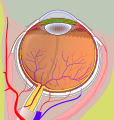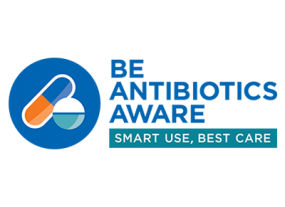- Hits: 1280
- Video Field: https://www.youtube.com/watch?v=iKPw6-cTpIA
We're for all- ALL are for us for the greater interest of Humanism-Truth-Facts-Friendship-Unity-Participation including Physico-Mental Sound Health with Spirituality, enrichment through ''TOTAL HEALTH SOLUTION'' to a Well-furnished GOALofTruth alloted for all in real sense ;
From wikipedia & other reliable sources ( Poets, Writers, Thinkers, Researchers, Free Lancers, Philosophers, Theologists, Scientists, Orators, Sociologists and Photographers +Artists-Musicians & etc.) we can learn as follows :

''An ophthalmologist is a physician who undergoes subspecialty training in medical and surgical eye care.[3] Following a medical degree, a doctor specialising in ophthalmology must pursue additional postgraduate residency training specific to that field. This may include a one-year integrated internship that involves more general medical training in other fields such as internal medicine or general surgery. Following residency, additional specialty training (or fellowship) may be sought in a particular aspect of eye pathology.[4]
Ophthalmologists prescribe medications to treat eye diseases, implement laser therapy, and perform surgery when needed.[5] Ophthalmologists provide both primary and specialty eye care - medical and surgical.[5] Most ophthalmologists participate in academic research on eye diseases at some point in their training and many include research as part of their career.[6] Ophthalmology has always been at the forefront of medical research with a long history of advancement and innovation in eye care''.[7]
- Hits: 1170
- Video Field: https://www.youtube.com/watch?v=iKPw6-cTpIA
We're for all- ALL are for us for the greater interest of Humanism-Truth-Facts-Friendship-Unity-Participation including Physico-Mental Sound Health with Spirituality, enrichment through ''TOTAL HEALTH SOLUTION'' to a Well-furnished GOALofTruth alloted for all in real sense ;
From wikipedia & other reliable sources ( Poets, Writers, Thinkers, Researchers, Free Lancers, Philosophers, Theologists, Scientists, Orators, Sociologists and Photographers +Artists-Musicians & etc.) we can learn as follows :








''Conventional medicine, also called Western medicine or modern medicine, is when healthcare professionals such as doctors, nurses, and therapists use scientific research to diagnose and treat symptoms and conditions. Examples of conventional medicine include: pharmaceutical medications. physical rehabilitation.
Conventional treatment or Conventional therapy is the therapy that is widely used and accepted by most health professionals. It is different from alternative therapies, which are not as widely used. Examples of conventional treatment: some treatment for cancer include surgery, chemotherapy and radiation therapy.
Medical availability and clinical practice varies across the world due to regional differences in culture and technology. Modern scientific medicine is highly developed in the Western world, while in developing countries such as parts of Africa or Asia, the population may rely more heavily on traditional medicine with limited evidence and efficacy and no required formal training for practitioners.[8]
In the developed world, evidence-based medicine is not universally used in clinical practice; for example, a 2007 survey of literature reviews found that about 49% of the interventions lacked sufficient evidence to support either benefit or harm.[9]
In modern clinical practice, physicians and physician assistants personally assess patients in order to diagnose, prognose, treat, and prevent disease using clinical judgment. The doctor-patient relationship typically begins an interaction with an examination of the patient's medical history and medical record, followed by a medical interview[10] and a physical examination. Basic diagnostic medical devices (e.g. stethoscope, tongue depressor) are typically used. After examination for signs and interviewing for symptoms, the doctor may order medical tests (e.g. blood tests), take a biopsy, or prescribe pharmaceutical drugs or other therapies. Differential diagnosis methods help to rule out conditions based on the information provided. During the encounter, properly informing the patient of all relevant facts is an important part of the relationship and the development of trust. The medical encounter is then documented in the medical record, which is a legal document in many jurisdictions.[11] Follow-ups may be shorter but follow the same general procedure, and specialists follow a similar process. The diagnosis and treatment may take only a few minutes or a few weeks depending upon the complexity of the issue.
The components of the medical interview[10] and encounter are:
- Chief complaint (CC): the reason for the current medical visit. These are the 'symptoms.' They are in the patient's own words and are recorded along with the duration of each one. Also called 'chief concern' or 'presenting complaint'.
- History of present illness (HPI): the chronological order of events of symptoms and further clarification of each symptom. Distinguishable from history of previous illness, often called past medical history (PMH). Medical history comprises HPI and PMH.
- Current activity: occupation, hobbies, what the patient actually does.
- Medications (Rx): what drugs the patient takes including prescribed, over-the-counter, and home remedies, as well as alternative and herbal medicines or remedies. Allergies are also recorded.
- Past medical history (PMH/PMHx): concurrent medical problems, past hospitalizations and operations, injuries, past infectious diseases or vaccinations, history of known allergies.
- Social history (SH): birthplace, residences, marital history, social and economic status, habits (including diet, medications, tobacco, alcohol).
- Family history (FH): listing of diseases in the family that may impact the patient. A family tree is sometimes used.
- Review of systems (ROS) or systems inquiry: a set of additional questions to ask, which may be missed on HPI: a general enquiry (have you noticed any weight loss, change in sleep quality, fevers, lumps and bumps? etc.), followed by questions on the body's main organ systems (heart, lungs, digestive tract, urinary tract, etc.).
The physical examination is the examination of the patient for medical signs of disease, which are objective and observable, in contrast to symptoms that are volunteered by the patient and not necessarily objectively observable.[12] The healthcare provider uses sight, hearing, touch, and sometimes smell (e.g., in infection, uremia, diabetic ketoacidosis). Four actions are the basis of physical examination: inspection, palpation (feel), percussion (tap to determine resonance characteristics), and auscultation (listen), generally in that order although auscultation occurs prior to percussion and palpation for abdominal assessments.[13]
The clinical examination involves the study of:[14]
- Vital signs including height, weight, body temperature, blood pressure, pulse, respiration rate, and hemoglobin oxygen saturation[14]
- General appearance of the patient and specific indicators of disease (nutritional status, presence of jaundice, pallor or clubbing)
- Skin
- Head, eye, ear, nose, and throat (HEENT)[14]
- Cardiovascular (heart and blood vessels)
- Respiratory (large airways and lungs)[14]
- Abdomen and rectum
- Genitalia (and pregnancy if the patient is or could be pregnant)
- Musculoskeletal (including spine and extremities)
- Neurological (consciousness, awareness, brain, vision, cranial nerves, spinal cord and peripheral nerves)
- Psychiatric (orientation, mental state, mood, evidence of abnormal perception or thought).
It is to likely focus on areas of interest highlighted in the medical history and may not include everything listed above.
The treatment plan may include ordering additional medical laboratory tests and medical imaging studies, starting therapy, referral to a specialist, or watchful observation. Follow-up may be advised. Depending upon the health insurance plan and the managed care system, various forms of "utilization review", such as prior authorization of tests, may place barriers on accessing expensive services.[15]
The medical decision-making (MDM) process involves analysis and synthesis of all the above data to come up with a list of possible diagnoses (the differential diagnoses), along with an idea of what needs to be done to obtain a definitive diagnosis that would explain the patient's problem.
On subsequent visits, the process may be repeated in an abbreviated manner to obtain any new history, symptoms, physical findings, and lab or imaging results or specialist consultations.
- Hits: 1084
- Video Field: https://www.youtube.com/watch?v=iKPw6-cTpIA
We're for all- ALL are for us for the greater interest of Humanism-Truth-Facts-Friendship-Unity-Participation including Physico-Mental Sound Health with Spirituality, enrichment through ''TOTAL HEALTH SOLUTION'' to a Well-furnished GOALofTruth alloted for all in real sense ;
From wikipedia & other reliable sources ( Poets, Writers, Thinkers, Researchers, Free Lancers, Philosophers, Theologists, Scientists, Orators, Sociologists and Photographers +Artists-Musicians & etc.) we can learn as follows :




 Homoeopathy is the 1st One of Highly-Proved Life Saving CURATIVE MEDICINE at Super-Scientifically Ideal Health-Care system of Modern Medical Curative field though someone named IT as alternative medicine. Though these miraculous medical healing practices started so more thousands years ago yet It was conceived again in 1796 by the German physician Samuel Hahnemann. Its practitioners, called Homeopath-Physician who is able to CURE Properly, patients sufferings from physico-memtal illness including Neuro-Hormonal-Lymphatic and Biochemico-Mechanical complexities; And which One proved that a substance that causes irregular & unwanted symptoms of multiple diseases in healthy people can cure similar symptoms in sick people initially if prescribed properly-but secondly, 'IT' starts its miraculous curing capacities with no bounds through common scientific formulation of accuracy +successes in every step of Health regaining +TripleHealth Solution; this doctrine is called similia similibus curentur, or "THE same cures THE SAME++++++".[5] Homeopathic preparations are termed remedies and are made using homeopathic dilution. In this process, the selected substance is repeatedly diluted until the final product is chemically active to use healing in real sense from the diluent. Though not even a crude properties of the original substance can be expected to remain in the product, then ''Energy Based Healing Level'' come to light.[6] Between each dilution homeopaths may hit and/or shake the product can Create, claiming this makes the diluent more active to HEAL the original illness after its removal. Practitioners keep standard supervision in all levels of treatment +curing-field properly assuring Health regain+. Researcher/wiser/patient justly claim that such preparations, upon oral intake, can treat or cure maximum level of diseases. if one follow food-drink-medicine intaking prescription wisely from a experienced Physician who deals ''Physico-Mental patient management'' properly with most attention- they shall get accurate healing output with no rumor or bad remarks surely .[7]
Homoeopathy is the 1st One of Highly-Proved Life Saving CURATIVE MEDICINE at Super-Scientifically Ideal Health-Care system of Modern Medical Curative field though someone named IT as alternative medicine. Though these miraculous medical healing practices started so more thousands years ago yet It was conceived again in 1796 by the German physician Samuel Hahnemann. Its practitioners, called Homeopath-Physician who is able to CURE Properly, patients sufferings from physico-memtal illness including Neuro-Hormonal-Lymphatic and Biochemico-Mechanical complexities; And which One proved that a substance that causes irregular & unwanted symptoms of multiple diseases in healthy people can cure similar symptoms in sick people initially if prescribed properly-but secondly, 'IT' starts its miraculous curing capacities with no bounds through common scientific formulation of accuracy +successes in every step of Health regaining +TripleHealth Solution; this doctrine is called similia similibus curentur, or "THE same cures THE SAME++++++".[5] Homeopathic preparations are termed remedies and are made using homeopathic dilution. In this process, the selected substance is repeatedly diluted until the final product is chemically active to use healing in real sense from the diluent. Though not even a crude properties of the original substance can be expected to remain in the product, then ''Energy Based Healing Level'' come to light.[6] Between each dilution homeopaths may hit and/or shake the product can Create, claiming this makes the diluent more active to HEAL the original illness after its removal. Practitioners keep standard supervision in all levels of treatment +curing-field properly assuring Health regain+. Researcher/wiser/patient justly claim that such preparations, upon oral intake, can treat or cure maximum level of diseases. if one follow food-drink-medicine intaking prescription wisely from a experienced Physician who deals ''Physico-Mental patient management'' properly with most attention- they shall get accurate healing output with no rumor or bad remarks surely .[7]
"" All relevant scientific knowledge about physics, chemistry, biochemistry and biology don't[8][9][10][11][12][13][14] contradicts homeopathy in real sense of Modern Science & Realistic Philosophy. Homeopathic remedies are typically biochemically inert, and have enough logical and accurate effect on all known diseases.[8][15][16] Its theory of disease, centered around principles Hahnemann termed miasms, is group of multiple food-drinks-medicine-environment and genetic complexities with millions+++ number of micro organisms such of viruses and bacteria as causes of disease with bio-chemical inter-action in the ever-changed NATURE around. Clinical trials have been conducted and generally demonstrated fully effective from homeopathic preparations.[17][18][19]: 206 [20] The fundamental necessity of homeopathy as well as CURING of demonstrable effectiveness has led to it being characterized within the scientific and medical communities as most important therpeutic procedure management in the world ever.
Homeopathy achieved its greatest popularity in the 19th century. It was introduced to the United States in 1825 with the first homeopathic school opening in 1835. Throughout the 19th century, dozens of homeopathic institutions appeared in Europe and the United States. During this period, homeopathy was able to appear relatively successful, as other forms of treatment could be harmful and ineffective. By the end of the century the practice began to wane, with the last exclusively homeopathic medical school in the United States closing in 1920. During the 1970s, homeopathy made a significant comeback, with sales of some homeopathic products increasing tenfold. The trend corresponded with the rise of the New Age movement, and may be in part due to chemophobia, an irrational preference for "natural" products, and the longer consultation times homeopathic practitioners provided.
''In the 21st century a series of meta-analyses have shown that the therapeutic claims of homeopathy lack scientific justification. As a result, national and international bodies have recommended the withdrawal of government funding for homeopathy in healthcare. National bodies from Australia, the United Kingdom, Switzerland and France, as well as the European Academies' Science Advisory Council and the Russian Academy of Sciences have all concluded that homeopathy is ineffective, and recommended against the practice receiving any further funding.[23][24][25][26] The National Health Service in England no longer provides funding for homeopathic remedies and asked the Department of Health to add homeopathic remedies to the list of forbidden prescription items.[27][28][29] France removed funding in 2021,[30][31] while Spain has also announced moves to ban homeopathy and other pseudotherapies from health centers''.[32]
- Hits: 1080
- Video Field: https://www.youtube.com/watch?v=iKPw6-cTpIA
We're for all- ALL are for us for the greater interest of Humanism-Truth-Facts-Friendship-Unity-Participation including Physico-Mental Sound Health with Spirituality, enrichment through ''TOTAL HEALTH SOLUTION'' to a Well-furnished GOALofTruth alloted for all in real sense ;
From wikipedia & other reliable sources ( Poets, Writers, Thinkers, Researchers, Free Lancers, Philosophers, Theologists, Scientists, Orators, Sociologists and Photographers +Artists-Musicians & etc.) we can learn as follows :



''A biological system is a complex network which connects several biologically relevant entities. Biological organization spans several scales and are determined based different structures depending on what the system is.[1] Examples of biological systems at the macro scale are populations of organisms. On the organ and tissue scale in mammals and other animals, examples include the circulatory system, the respiratory system, and the nervous system. On the micro to the nanoscopic scale, examples of biological systems are cells, organelles, macromolecular complexes and regulatory pathways. A biological system is not to be confused with a living system, such as a living organism.
These specific systems are widely studied in human anatomy and are also present in many other animals.
- Respiratory system: the organs used for breathing, the pharynx, larynx, bronchi, lungs and diaphragm.
- Digestive system: digestion and processing food with salivary glands, oesophagus, stomach, liver, gallbladder, pancreas, intestines, rectum and anus.
- Cardiovascular system (heart and circulatory system): pumping and channeling blood to and from the body and lungs with heart, blood and blood vessels.
- Urinary system: kidneys, ureters, bladder and urethra involved in fluid balance, electrolyte balance and excretion of urine.
- Integumentary system: skin, hair, fat, and nails.
- Skeletal system: structural support and protection with bones, cartilage, ligaments and tendons.
- Endocrine system: communication within the body using hormones made by endocrine glands such as the hypothalamus, pituitary gland, pineal body or pineal gland, thyroid, parathyroid and adrenals, i.e., adrenal glands.
- Lymphatic system: structures involved in the transfer of lymph between tissues and the blood stream; includes the lymph and the nodes and vessels. The lymphatic system includes functions including immune responses and development of antibodies.
- Immune system: protects the organism from foreign bodies.
- Nervous system: collecting, transferring and processing information with brain, spinal cord, peripheral nervous system and sense organs.
- Muscular system: allows for manipulation of the environment, provides locomotion, maintains posture, and produces heat. Includes skeletal muscles, smooth muscles and cardiac muscle.
- Reproductive system: the sex organs, such as ovaries, fallopian tubes, uterus, vagina, mammary glands, testes, vas deferens, seminal vesicles and prostate.
USAAW is an annual observance that raises awareness of the threat of antibiotic resistance and the importance of appropriate antibiotic use.































